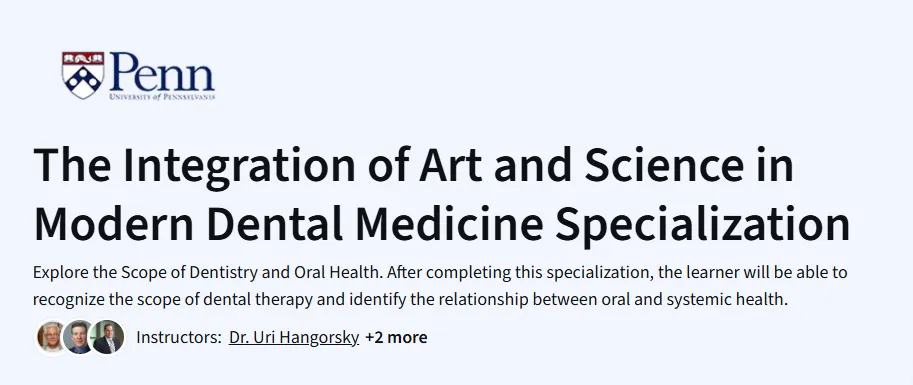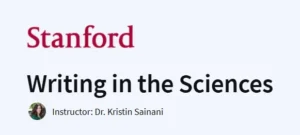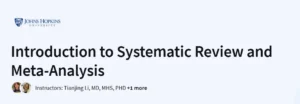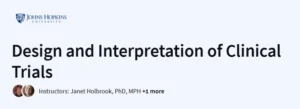What will you learn in The Integration of Art and Science in Modern Dental Medicine Specialization Course
Understand the biological, clinical, and systemic foundations of oral health
Explore the relationship between oral and overall health
Learn how dental professionals assess, diagnose, and treat common oral conditions
Analyze the evolution of dentistry as both an art and a science
Gain awareness of career paths and innovations in dental medicine
Program Overview
Course 1: Introduction to Dental Medicine
⏳ 3 weeks
Topics: Overview of dentistry, oral anatomy, common dental diseases
Hands-on: Case-based learning on diagnosis and dental history
Course 2: The Oral Cavity: Portal to Health and Disease
⏳ 3 weeks
Topics: Oral-systemic health link, diseases like diabetes and cardiovascular issues
Hands-on: Analysis of oral manifestations of systemic diseases
Course 3: The Many Faces of Oral Cancers
⏳ 3 weeks
Topics: Risk factors, early detection, oral cancer progression and treatment
Hands-on: Diagnostic visuals and cancer case discussions
Course 4: Materials in Oral Health
⏳ 3 weeks
Topics: Biomaterials, restorative technologies, evolution of dental tools
Hands-on: Material property analysis and clinical application scenarios
Course 5: The Oral Cavity Across the Lifespan
⏳ 3 weeks
Topics: Pediatric, adult, and geriatric oral health challenges
Hands-on: Developmental changes and age-based case simulations
Get certificate
Job Outlook
Excellent pathway for pre-dental students or healthcare professionals interested in oral-systemic health
Strong foundation for careers in dental public health, dental hygiene, and clinical dentistry
Addresses growing global demand for professionals with interdisciplinary dental knowledge
Useful for biomedical researchers exploring oral health innovations
Specification: The Integration of Art and Science in Modern Dental Medicine Specialization
|
FAQs
- Science provides the foundation for diagnosis and treatment.
- Art influences aesthetics, design, and patient-specific restorations.
- Dental professionals balance precision with visual harmony.
- Restorative procedures often combine function with cosmetic appeal.
- Understanding both ensures holistic oral healthcare.
- Builds strong theoretical knowledge of oral anatomy and disease.
- Introduces biomaterials and dental technologies.
- Helps develop scientific reasoning relevant to dentistry.
- Demonstrates commitment to dental career exploration.
- Strengthens applications by showing academic initiative.
- Focus remains on medical, systemic, and material knowledge.
- Case studies highlight patient perspectives indirectly.
- Emphasizes understanding oral health in a broader health context.
- Encourages learners to think about ethical aspects of care.
- Direct training in communication is outside this course’s scope.
- Useful for nurses, medical students, and public health professionals.
- Provides insights into oral-systemic disease links.
- Enhances interdisciplinary teamwork in patient care.
- Helps in recognizing oral signs of broader conditions.
- Adds perspective for healthcare policy or research roles.
- Discusses biomaterials and restorative dental science.
- Covers digital imaging for diagnosis and treatment.
- Highlights early cancer detection tools.
- Introduces evolving tools across different life stages.
- Encourages reflection on future innovation in dental medicine.





